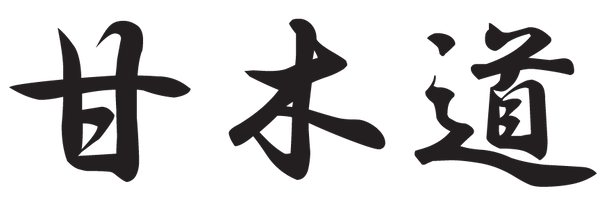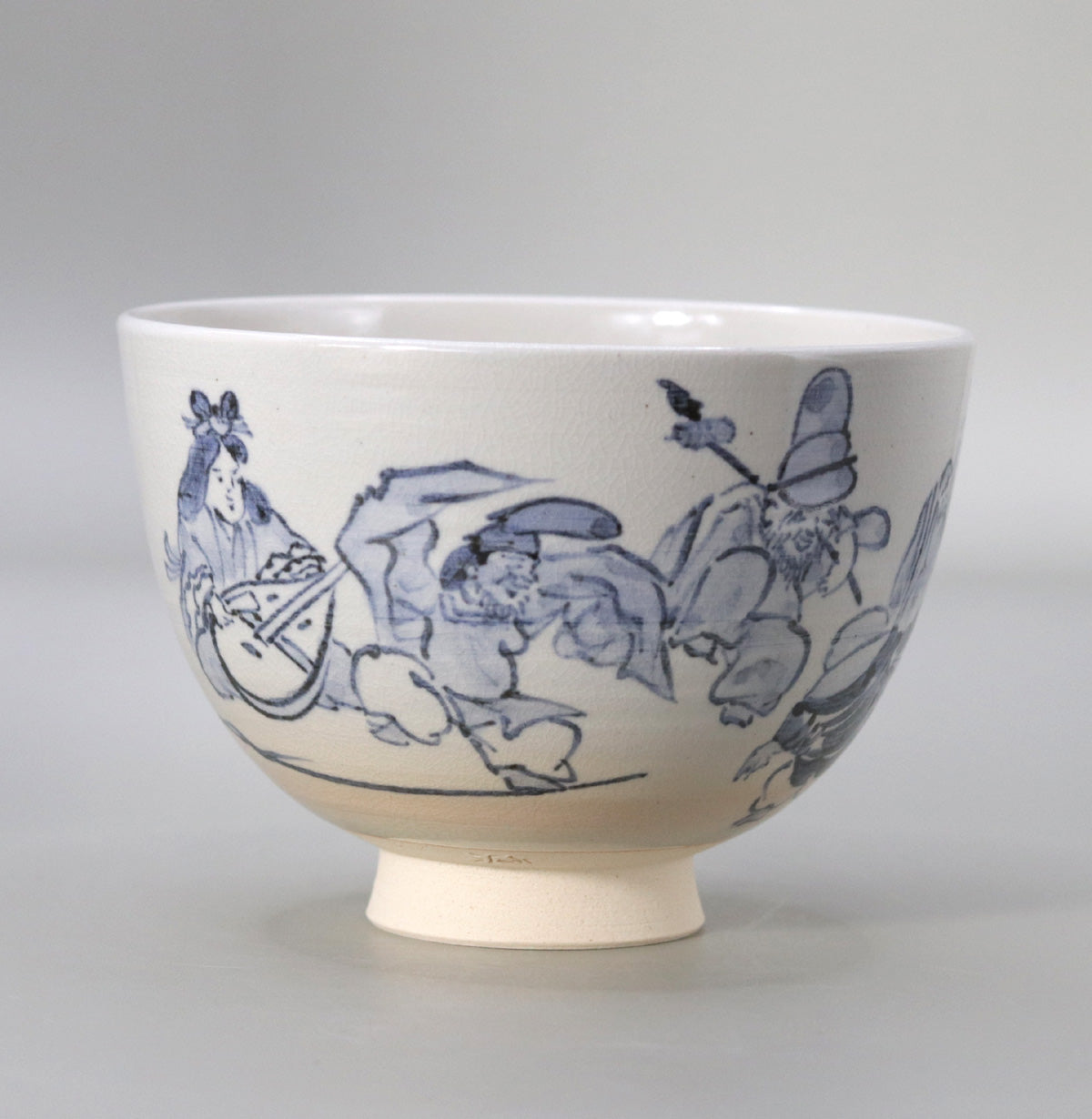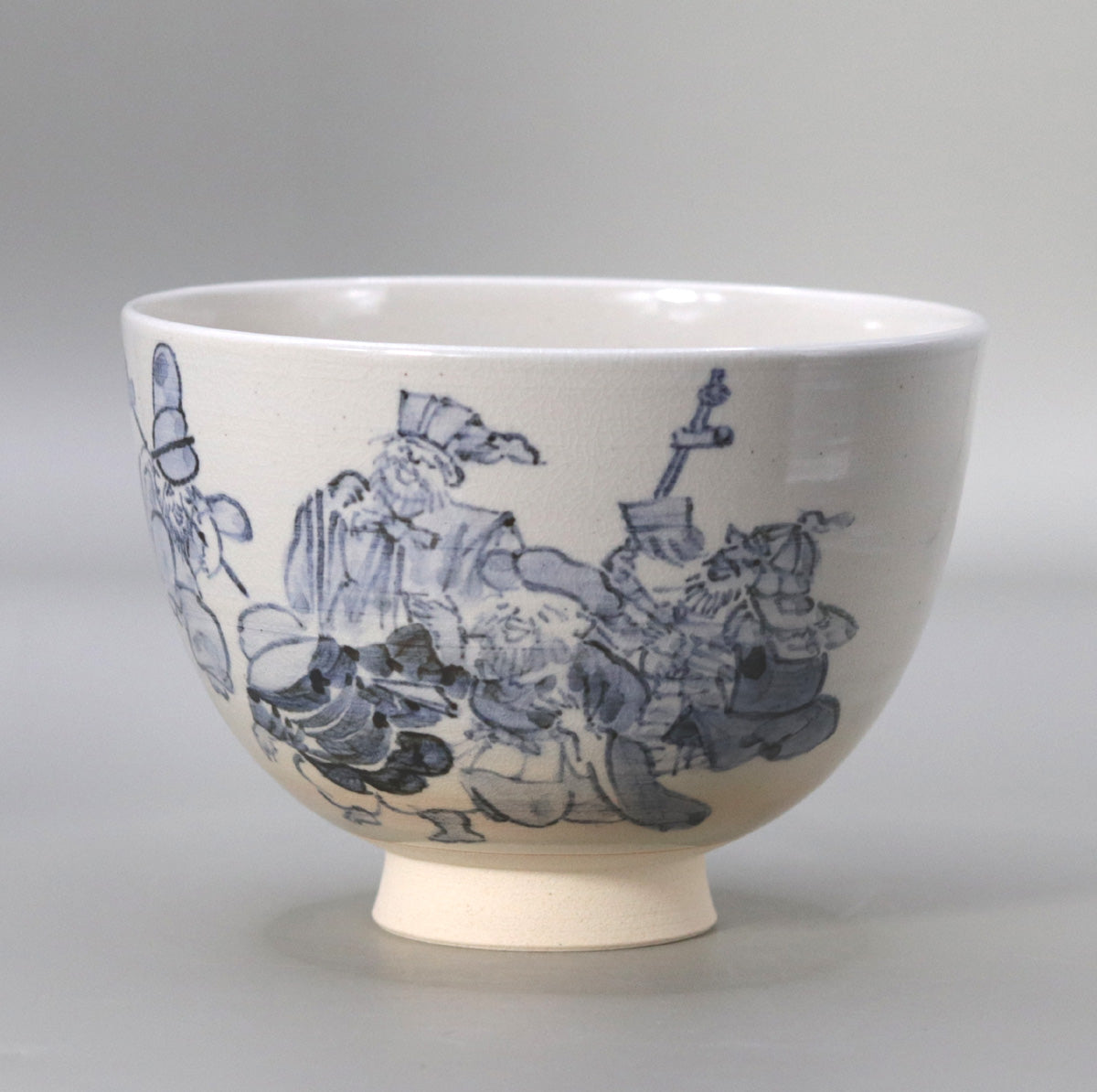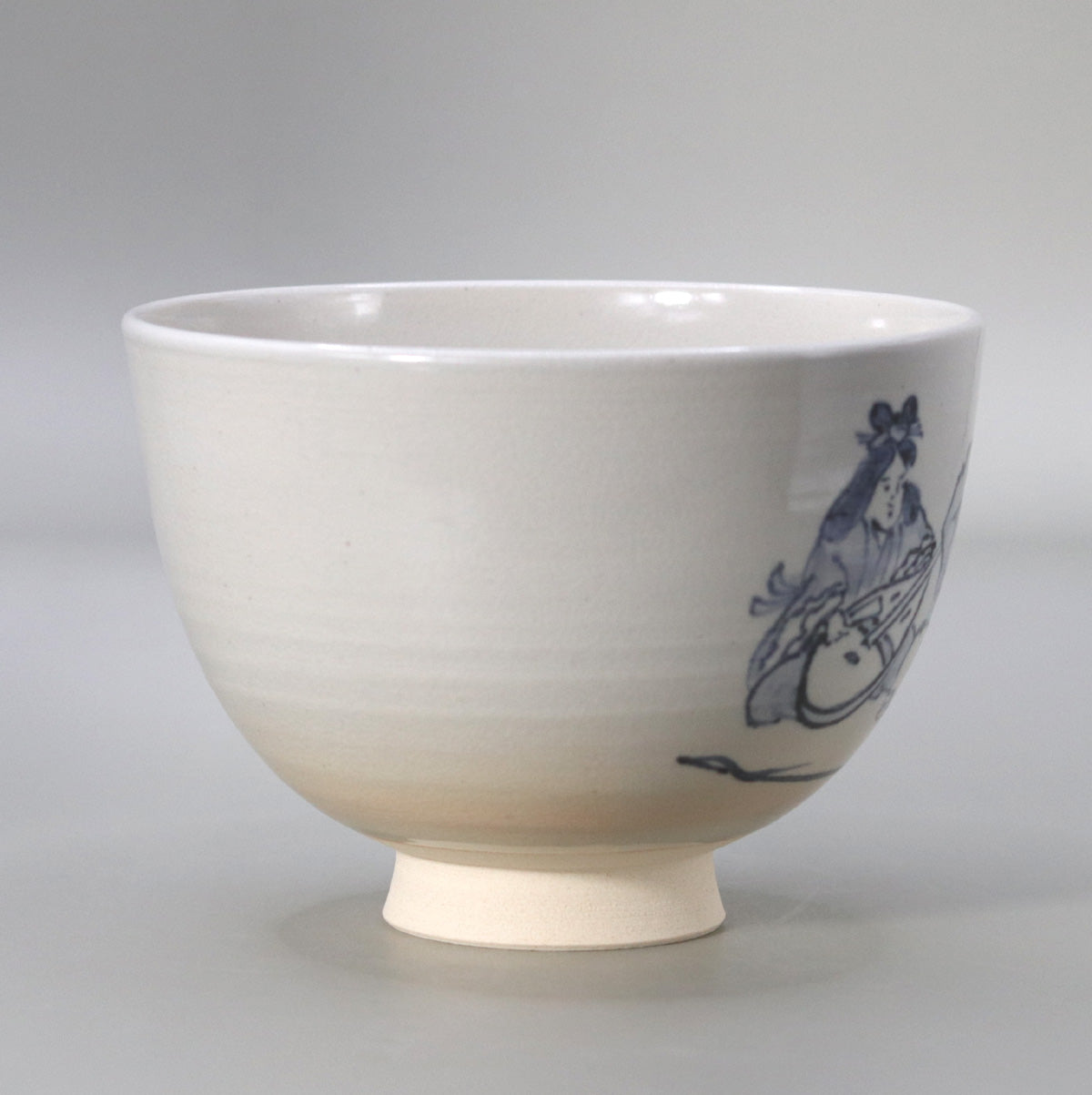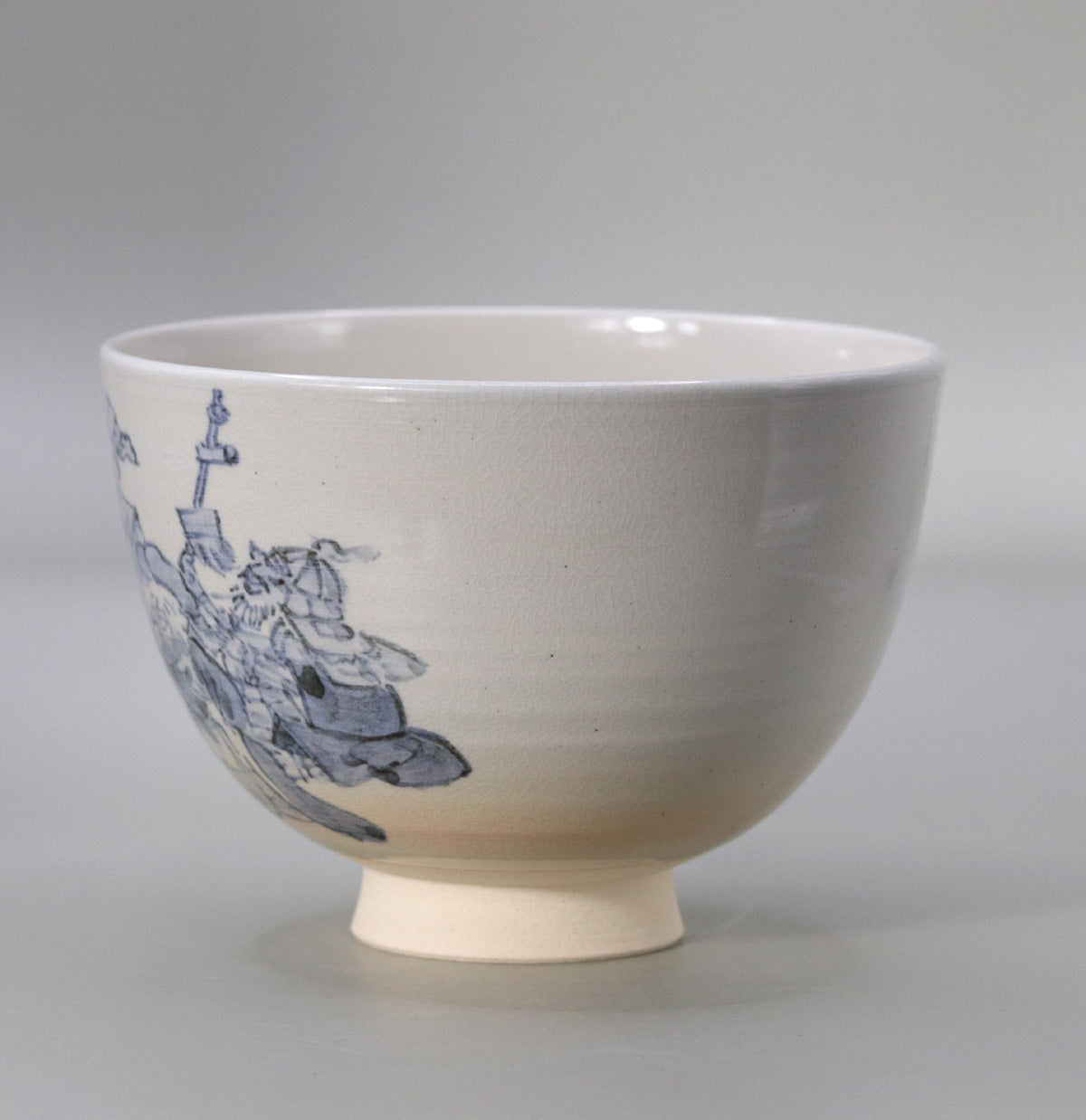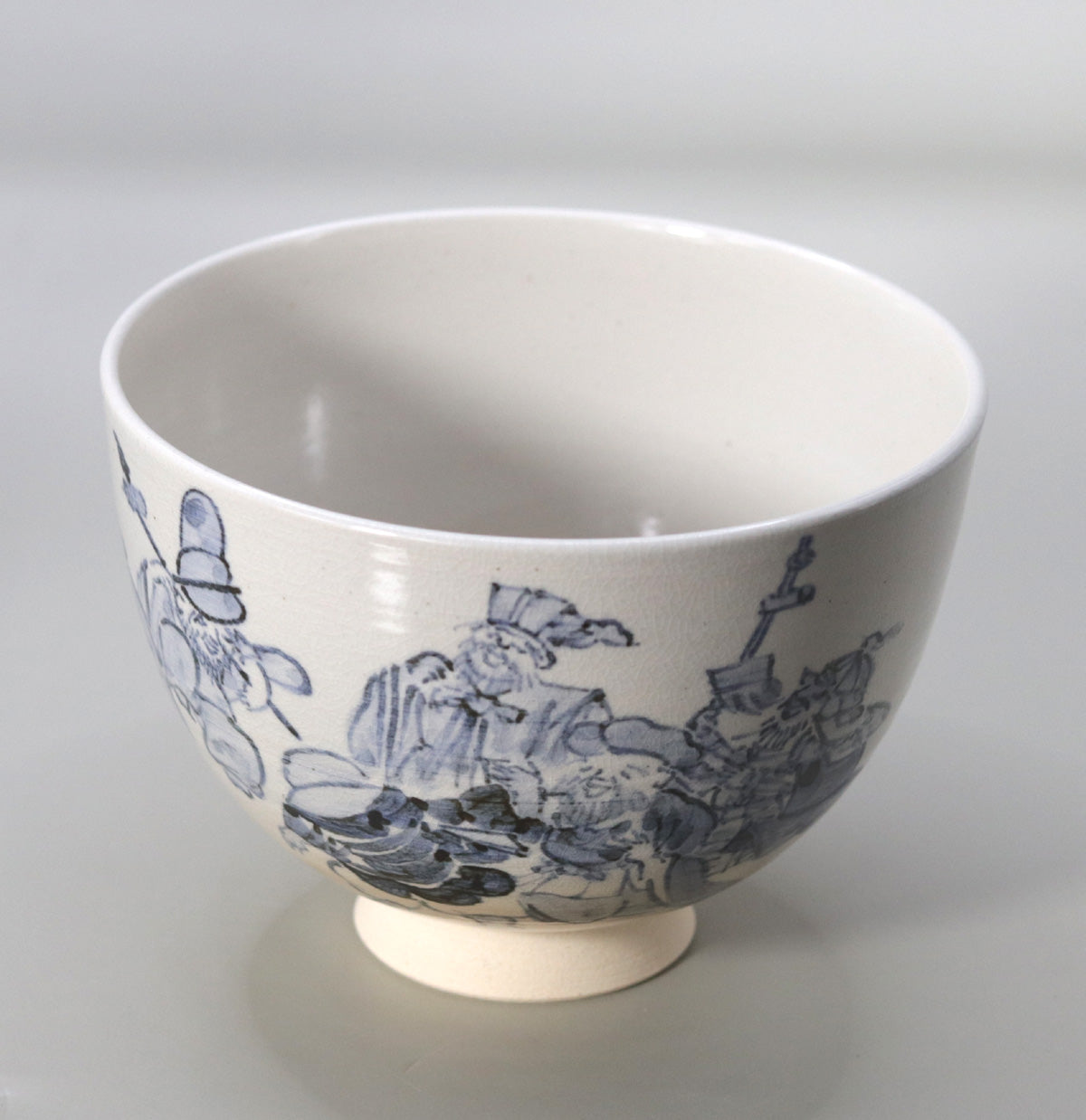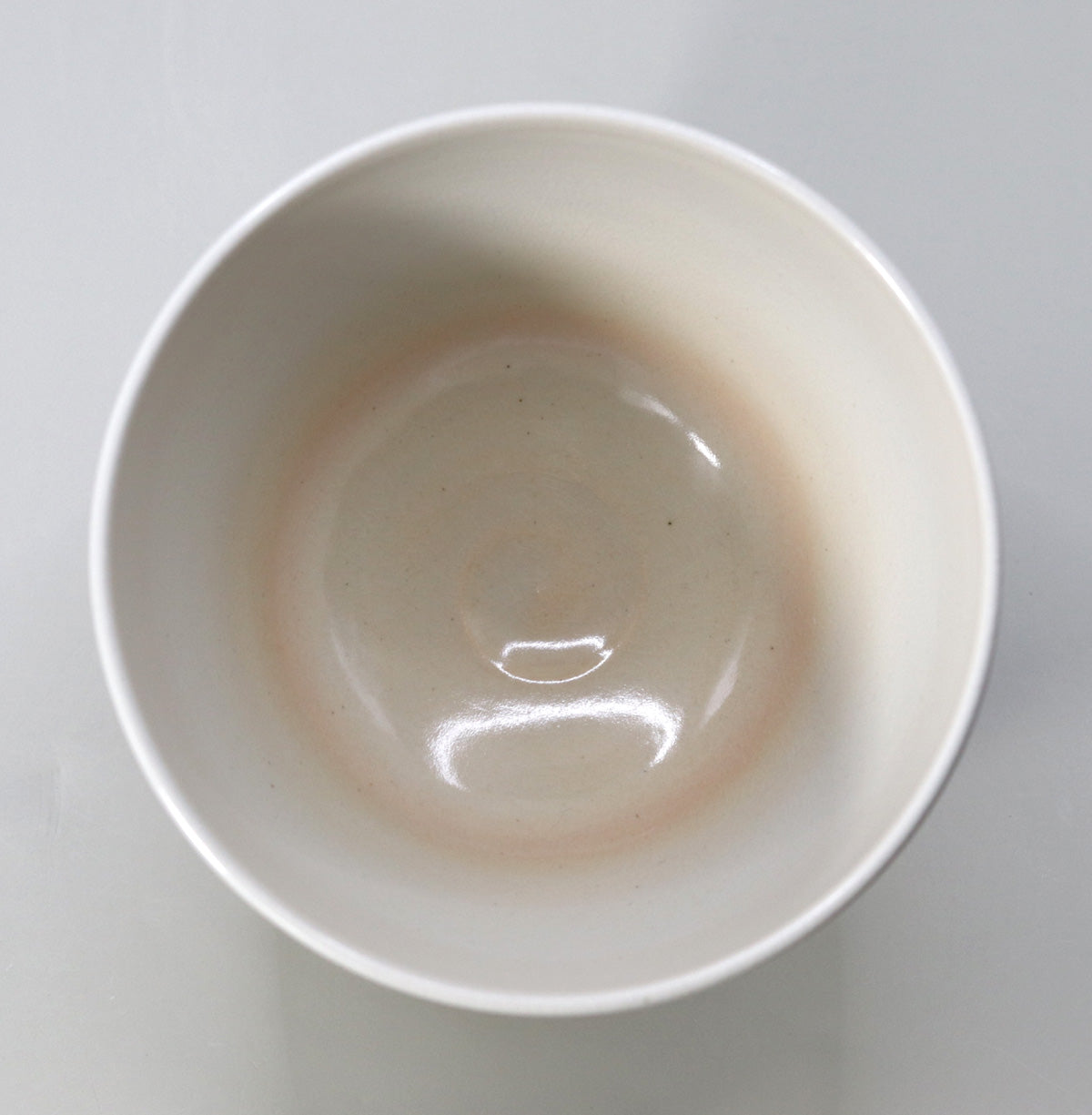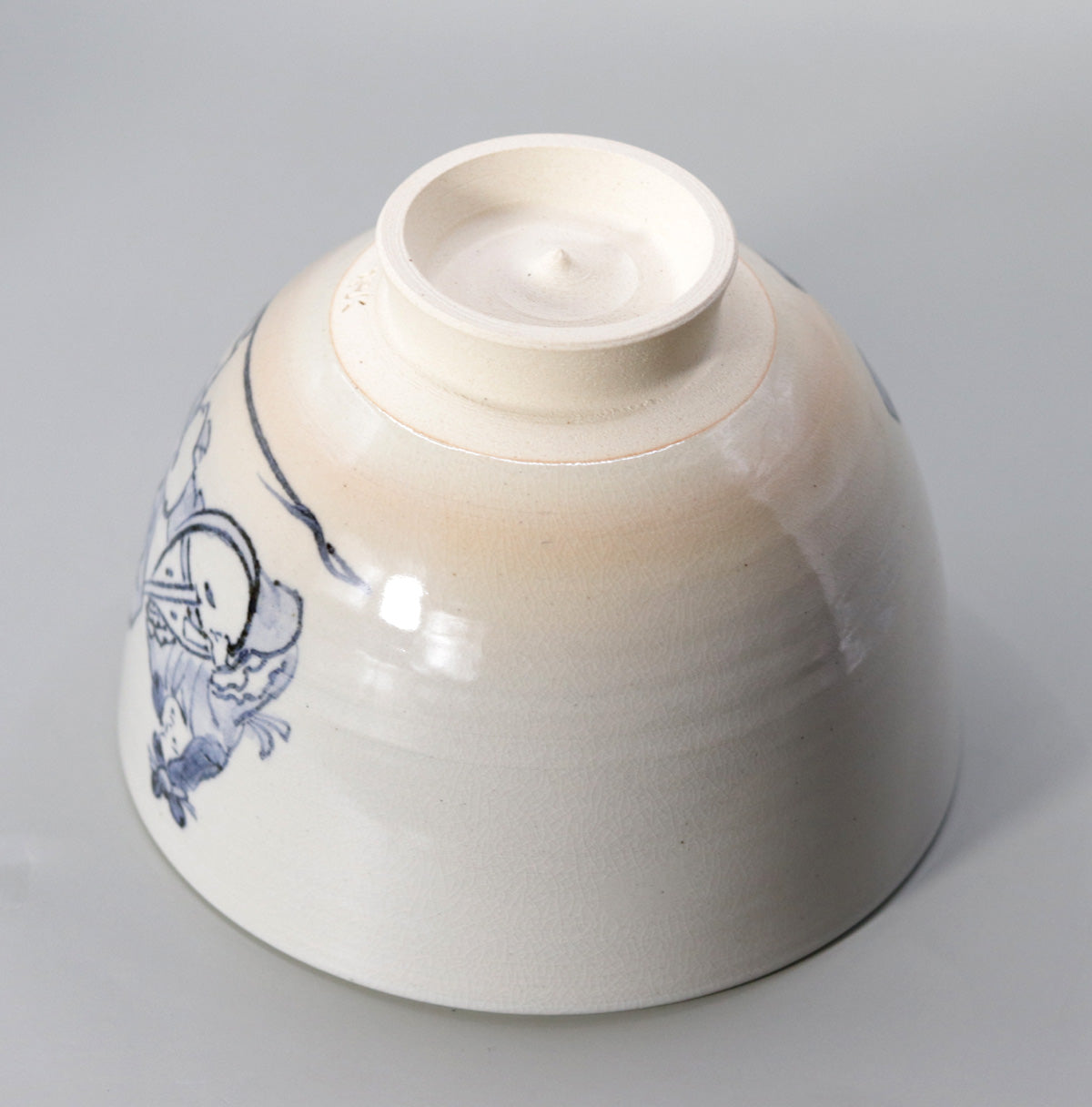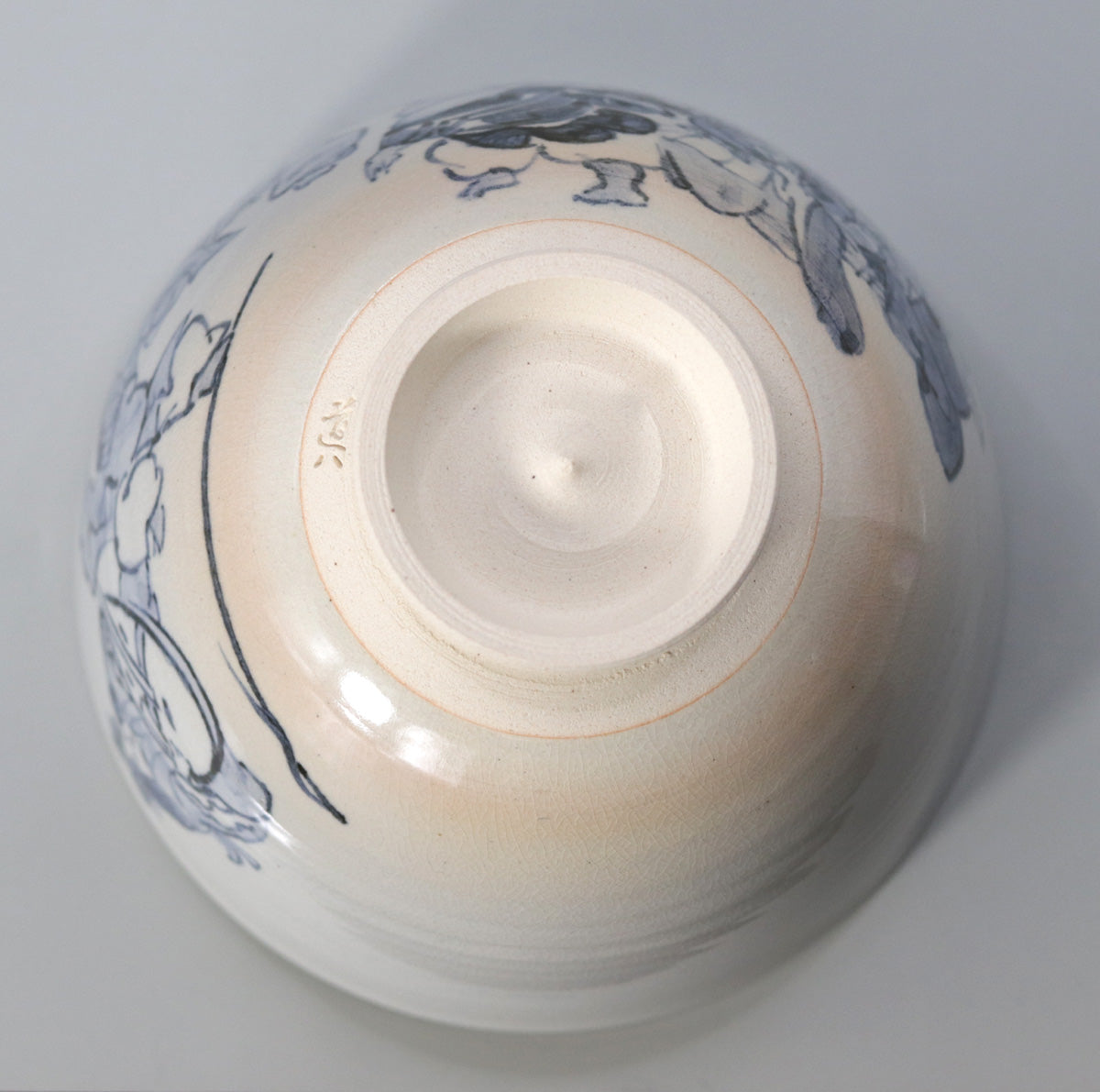Tea bowl with gosu painting of the Seven Lucky Gods by Dohachi Takahashi
Tea bowl with gosu painting of the Seven Lucky Gods by Dohachi Takahashi
Couldn't load pickup availability
Width: 12.3cm Height: 8.94cm
Gosu tea bowl with Seven Lucky Gods design - Takahashi Michihachi IX
This work, with the Seven Lucky Gods lightly painted in pale blue gosu on a soft gray glaze , is a celebratory masterpiece that reflects the symbol of good fortune and prosperity in one bowl. Below, we will explain its appeal and design background in detail from five perspectives.
1. Sculptural beauty - A dignified base and a torso that gives a sense of embrace
Based on a neat cylindrical shape created by wheel casting, the silhouette opens slightly towards the rim to catch the plump foam of the matcha tea. The body has just the right amount of tension, ensuring a volume that envelops the palm of your hand. The base is cut slightly higher, showcasing the simplicity of the base and further enhancing the clarity of the ash glaze . The center of gravity of the entire bowl is stable, so there is little shaking when using the tea whisk, making it a practical item with peace of mind.
2. Glaze Tone - A tranquil scene of ash and cracks
The ash glaze applied to the clay body has a soft milky white color with fine crazing, and depending on the angle of the light, it has delicate shadows. You can fully enjoy the pleasure of this piece as a "growing vessel" as the tea seeps into it and its appearance deepens over the years of use. The glaze is applied thinly from the edge of the base to the bottom, and the faint beige gradation created by the fire change during firing adds warmth.
3. Design - Procession of the Seven Lucky Gods
The line drawing that goes around the torso is a "procession picture" of the seven gods Ebisu, Daikokuten, Bishamonten, Benzaiten, Fukurokuju, Jurojin, and Hotei, drawn with light brushstrokes. Benzaiten is holding a biwa, suggesting a scene of entertainment. Daikokuten has a broad smile on his face, and Hotei is charmingly holding a lucky bag - each of them work together in dynamic poses to create a story like an unrolled picture scroll. The pale gosu shading gives a soft depth to the clothing and shadows, and the decoration is deliberately kept to a minimum on the inside, so that the outer picture emerges even more clearly when the green of the matcha is poured in.
4. Technique: The art of gosu line drawing and brush shading
This piece is classified as underglaze painting , and the bisque-fired base is painted with gosu, then covered with a transparent glaze and fired. The line drawing is a technique similar to "Yushibyo" that makes use of the brush strokes, and the strength and weakness of the brush pressure are expressed as the inflection of the lines. Furthermore, the amount of water in the brush and the concentration of the gosu are skillfully controlled, and the high level of expression is a highlight, showing the folds of the clothes and the shadows with a gradation of light and dark. Because it is fired at a high temperature, the color develops and settles into a deep blue with a deep indigo gray color.
5. Historical and Cultural Background - The Seven Lucky Gods and the Tea Ceremony
Belief in the Seven Lucky Gods spread among the general public after the Muromachi period, and in the Edo period it was established as a New Year's treasure ship painting and a lucky charm. It is also highly valued in the tea ceremony as a theme for "bringing good fortune," and tea utensils depicting the Seven Lucky Gods are often used at the first tea ceremony of the New Year and at auspicious tea ceremonies. Takahashi Michihachi is a master of Kyoto ware color painting, known for incorporating modern humor while still taking inspiration from the classics, and in this work he expresses the cheerfulness of the lucky gods with a light brushstroke. In addition, by limiting it to a simple blue color called gosu, it has a refined look that can easily be matched with modern spaces.
The Takahashi Dohachi family has been known as a prestigious Kyoto ware color painting family since the late Edo period. The ninth generation master graduated from the Department of Clothing Design at Kyoto Bunkyo Junior College, majored in design, and then went on to the Department of Molding and Research at Kyoto Prefectural Ceramic Technical College, and further solidified his technical foundation at the Kyoto Industrial Research Institute.
In 1996, he began to study pottery under his father, Dohachi Yashiro, and began making pottery in earnest.
In 2012, he took on the name of the ninth Takahashi Dohachi.
His style, which combines the sense of form cultivated in clothing design with the traditional techniques of Kyoto ware, has breathed new life into the Dohachi family of pottery and displays a sophistication that stands out in modern tea ceremonies and gallery spaces.
The blue of the gosu glaze dances as if it is swimming in the ash glaze , and this piece, which condenses the festive feeling of the Seven Lucky Gods into a small bowl, has the power to gently brighten up any setting, whether it is used for a New Year's tea ceremony or for everyday practice. The lightness of the handle, the stability of the foot, and the aging of the crazing - all of these will become more and more appealing the longer you use it. Please use it for many years to come and enjoy the story of good fortune depicted by Takahashi Michihachi with every sip.
Share
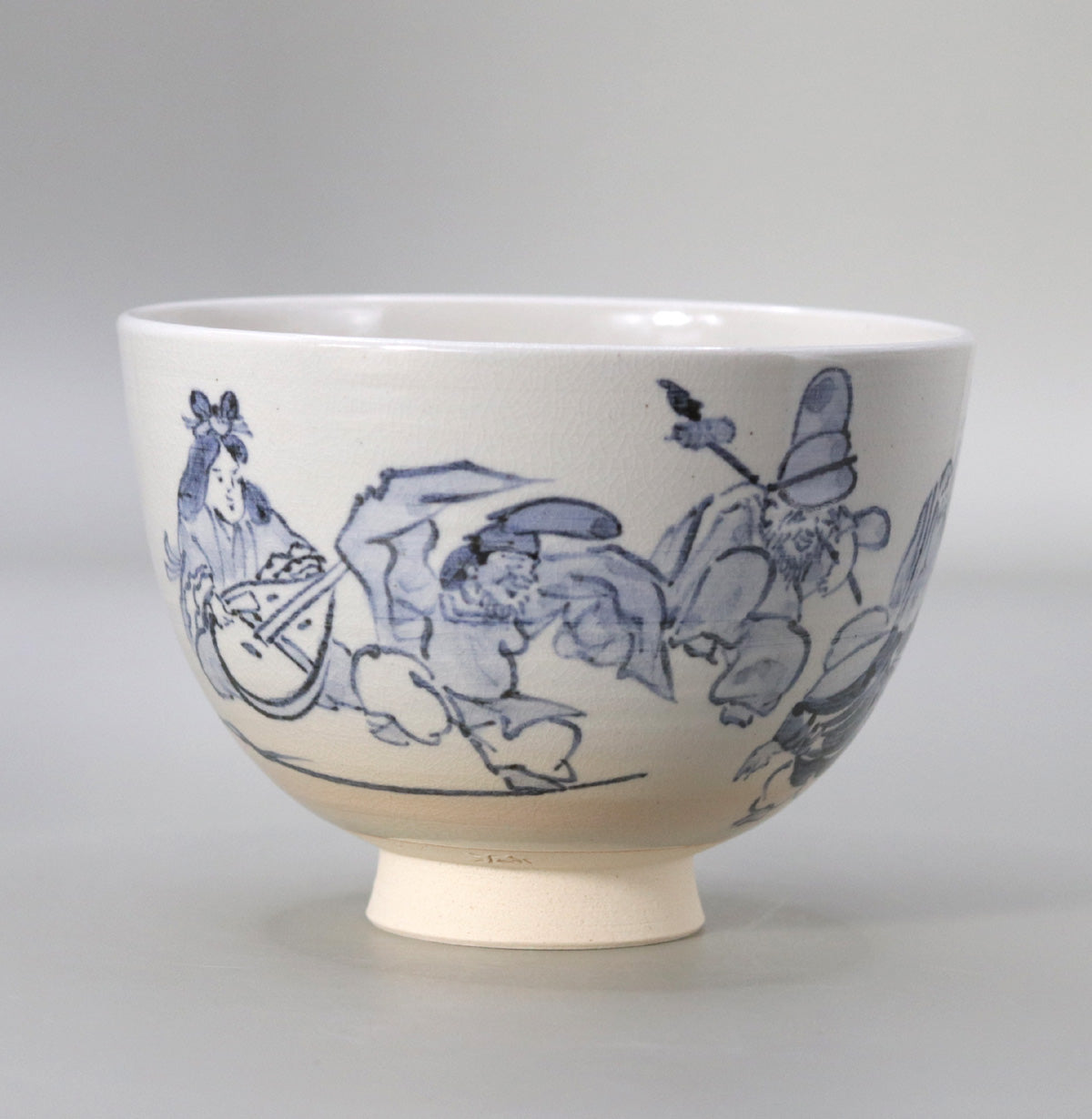
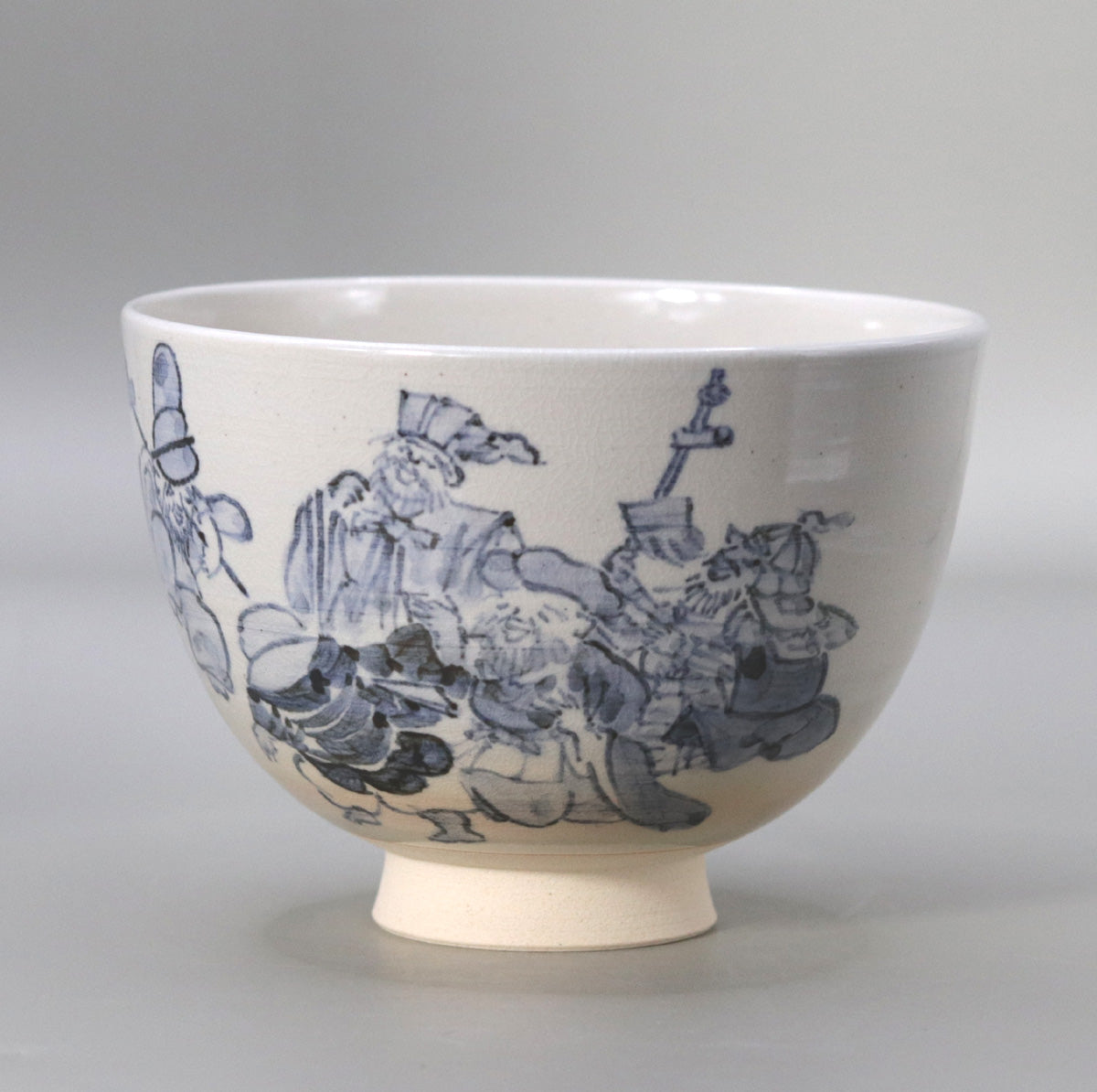
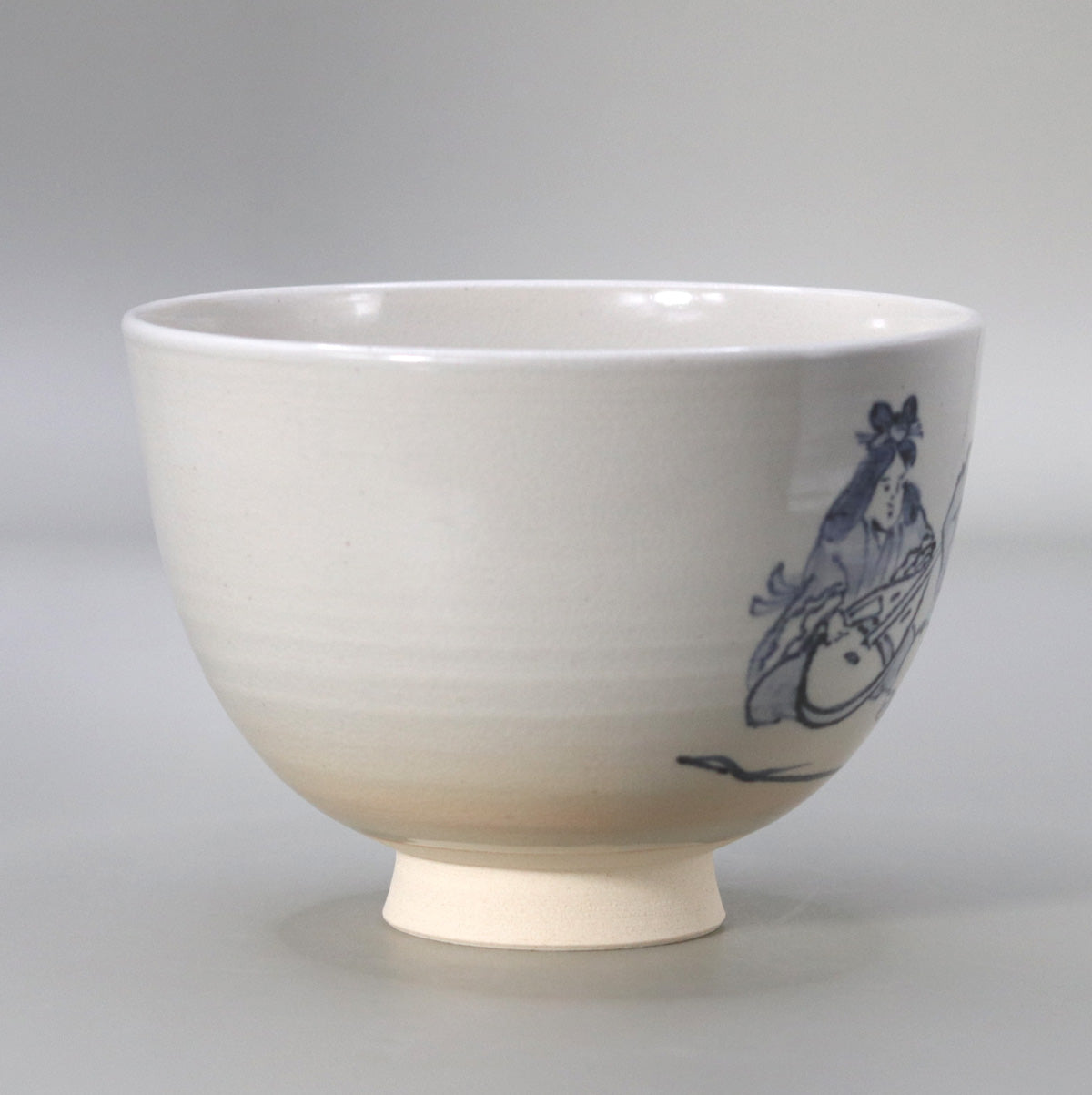
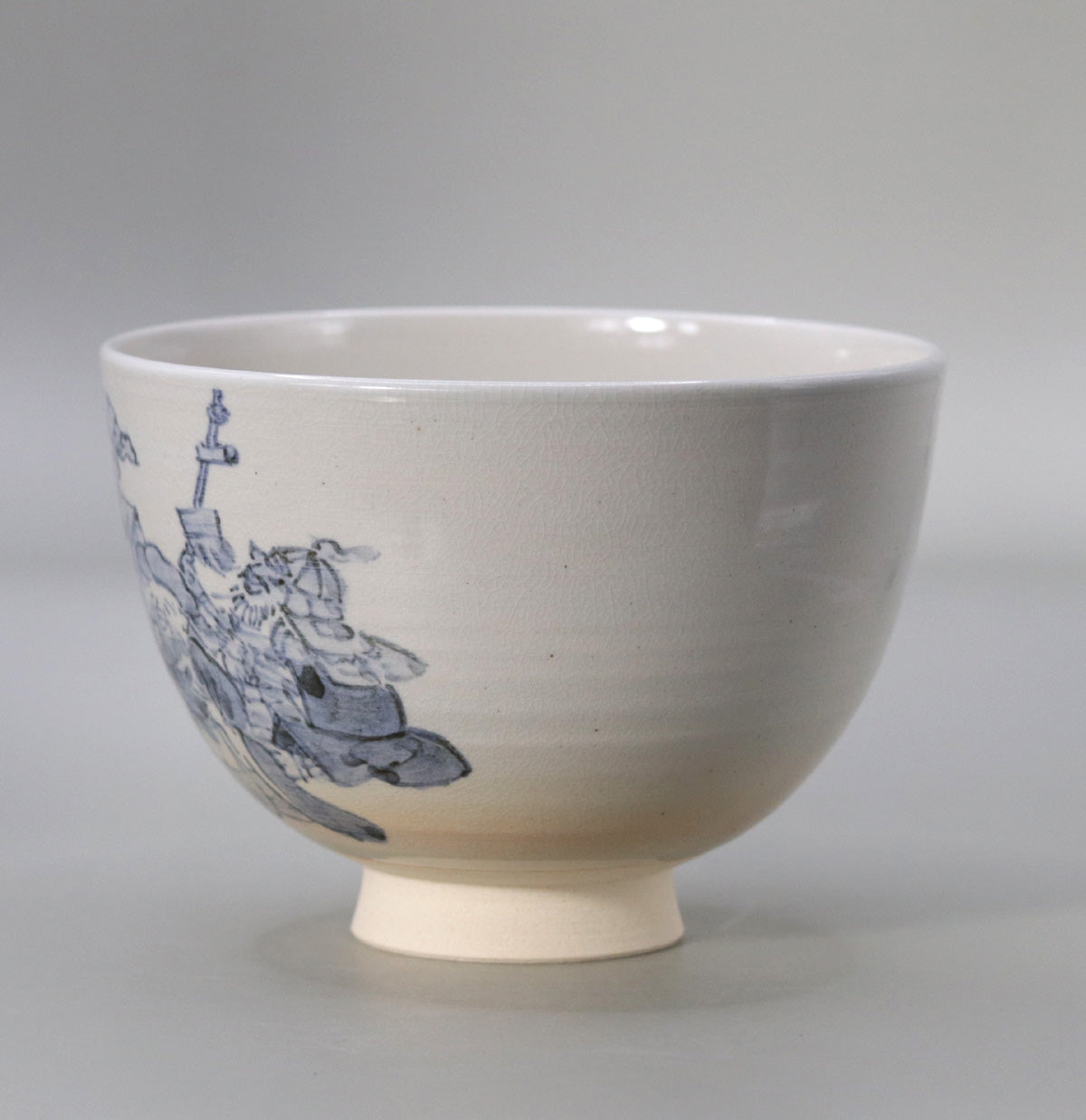

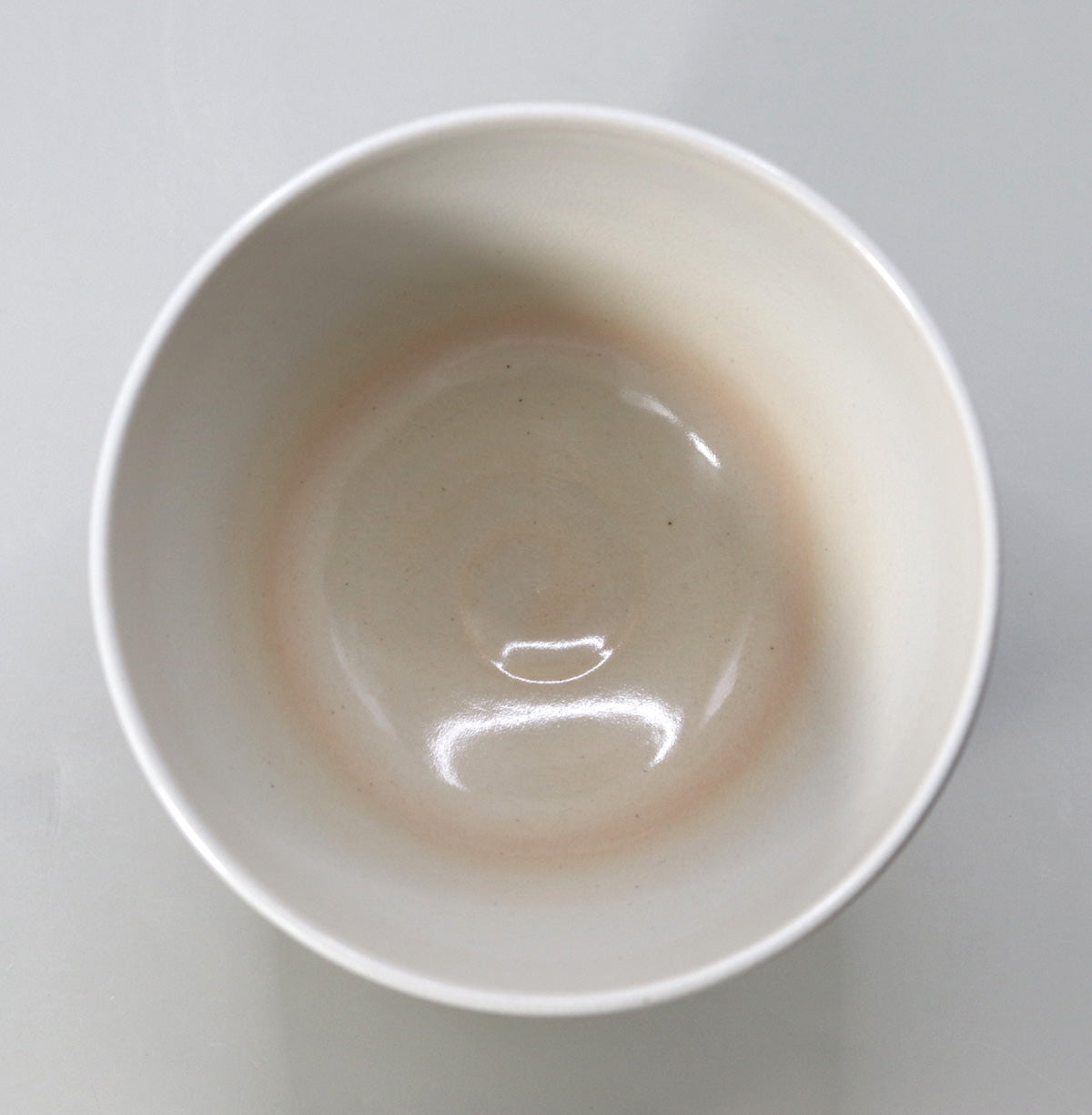
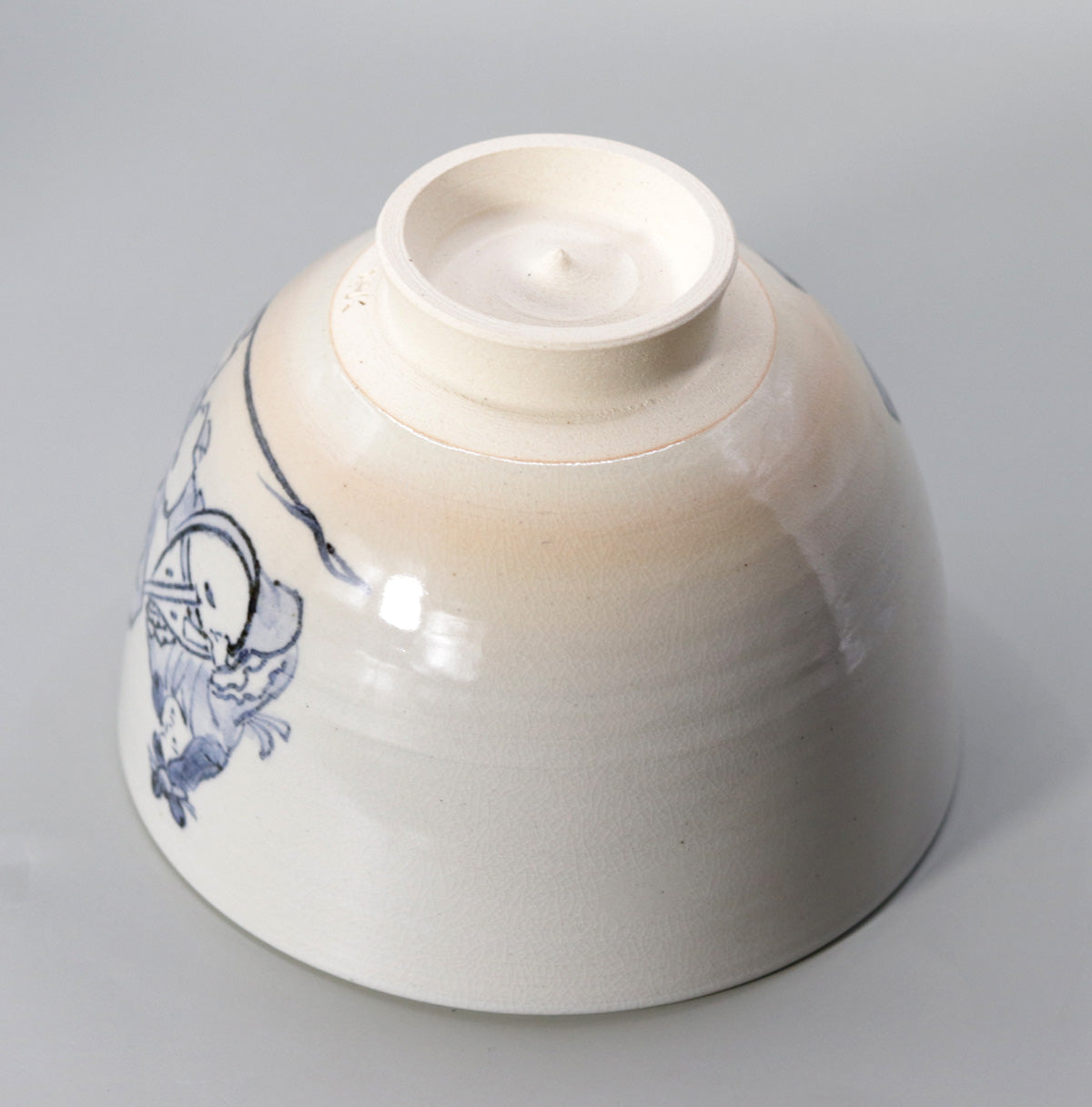
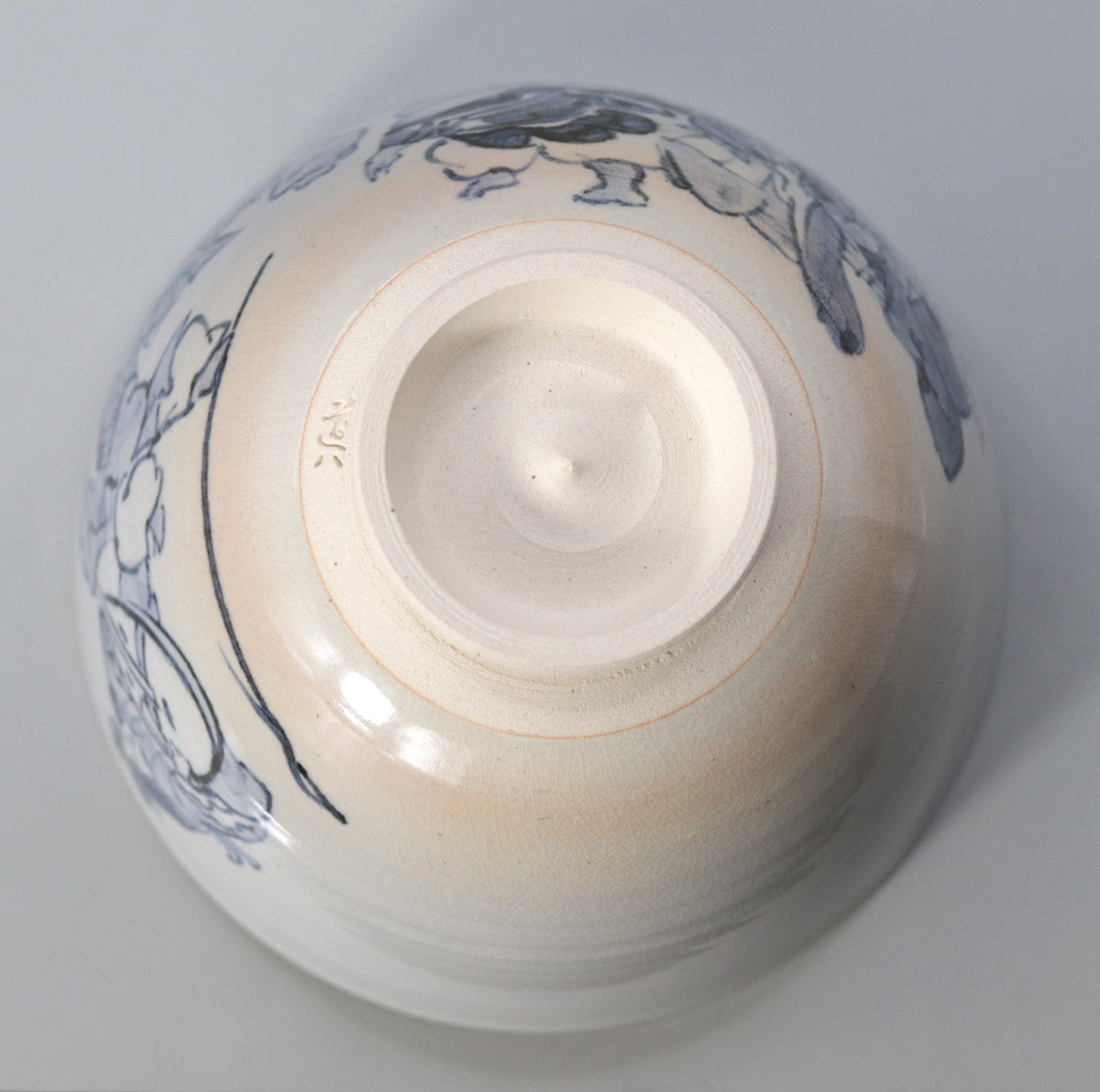
Multi-Column
-
[I will send it to you quickly and carefully]
We carefully package each product in a way that suits it best.
Also, delivery times vary depending on the piece (vessel, etc.).
Items that already come with a box will be shipped within 1-3 days of the order date.
For items that require a box to be made after your order, it will take approximately 30 days for production to be completed and then shipped.
In either case, once we have confirmed your order, we will contact you by email to inform you of the delivery date.
-
[Requests when purchasing pottery]
Even products that look the same may differ slightly in color, shape, size, etc.
The way the glaze is used, the power of the kiln, the firing method, the season, and the humidity also affect the appearance of the pottery.
Please understand the individuality of each piece of pottery and enjoy the unique warmth of handmade.
